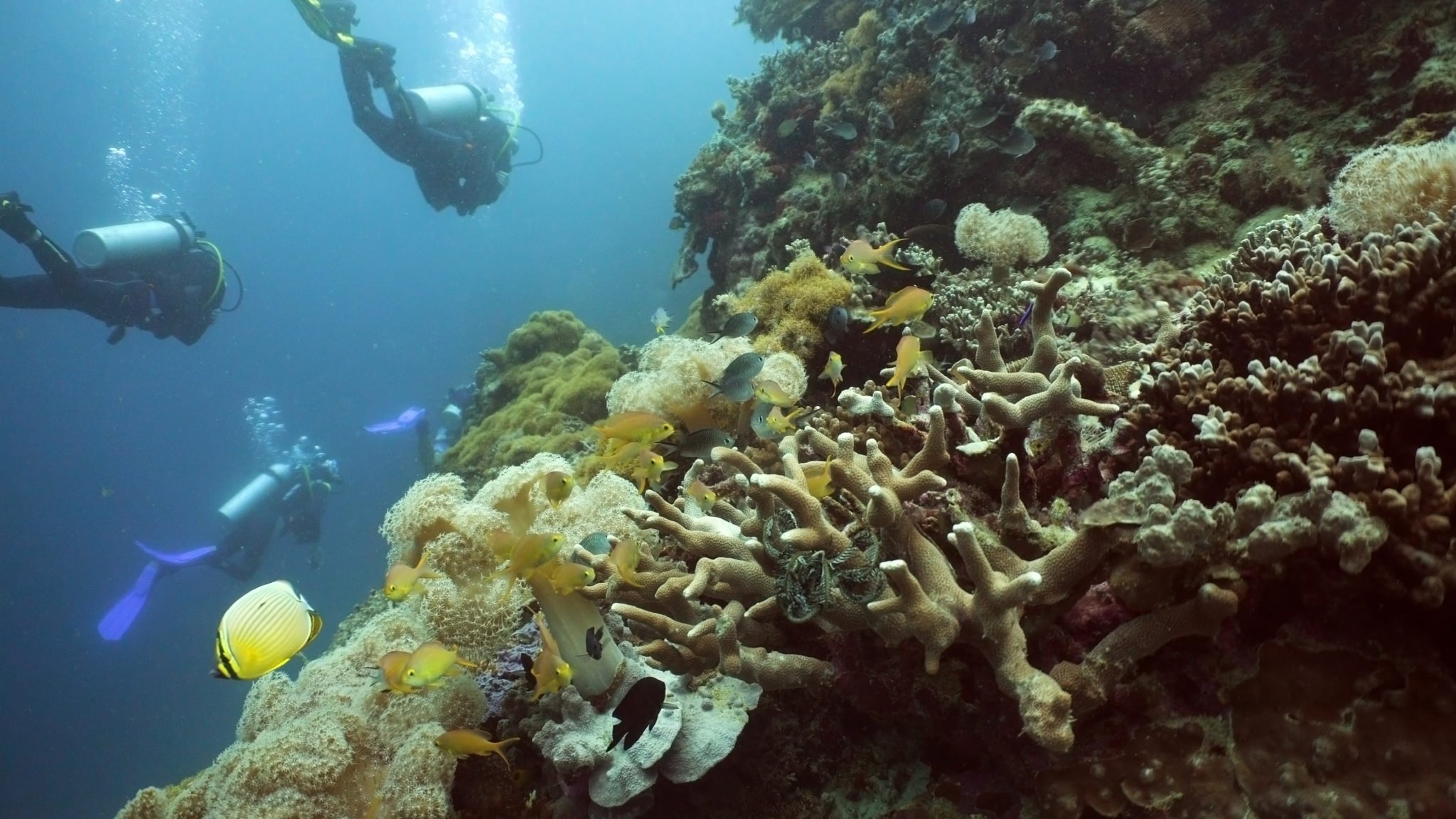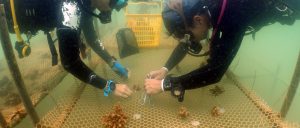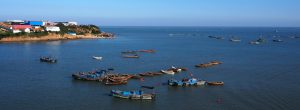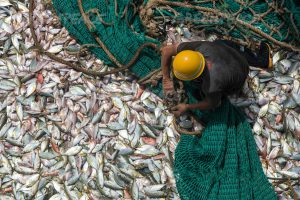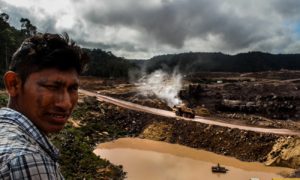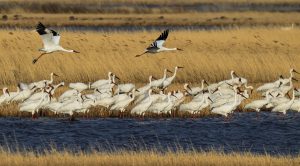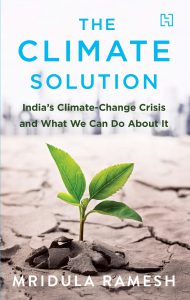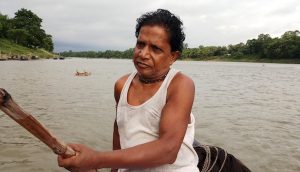You will be surprised what divers come across in the stew of rubbish that floats in the ocean. The flotsam is made up of the usual polystyrene cups and plates, plastic forks and spoons along with plastic bags as well as flip-flops; but as scuba divers go deeper into the recesses of the Arabian Sea in Pakistan, they come across more plastic shopping bags, crisp packets and yard upon yard of fishing nets. Then there is trash that makes you wonder how it got to the bottom of the sea – women’s undergarments for example.
Syed Mansoor Ahmed runs Scuba Adventures Pakistan, a professional dive centre, and is among a handful of certified diving instructors in Pakistan who have made it their mission to skim the ocean clean of human debris.
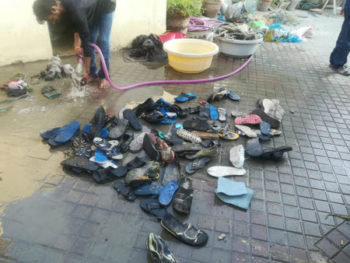
He has been combing the seafloor and picking up rubbish since 1998, but he acknowledges the sea still looks far from clean.
For the last two years, 46-year old Saquib Mehmood, along with three other scuba divers, has teamed up with Ahmed and picked up trash from the sea around the uninhabited Charna island, located in the Arabian Sea about nine kilometres west of the mouth of Balochistan’s Hub River.
Mehmood, who became a certified instructor in 2016, has recently started an organisation called Climate X, which is working on marine conservation while simultaneously supporting activities including eco-cultural tourism, education and advocacy.
Tradition and science go hand-in-hand
Cleaning up the ocean is quite a task. Nobody in the world has developed equipment that can quickly comb the bottom of the sea and haul trash without causing harm to the cliffs, corals and animals.
For now, says Mehmood, they use local knowledge to assess the regular hotspots of fishermen because invariably they will abandon their nets there. They also use sonar equipment, which gives them an idea of the topography of the sea bottom. “There is a likelihood that if the bed is rocky and shallow, plastic and nets will easily get stuck there,” he said.
They are also training another two dozen or so divers from among a pool of over 700 certified scuba divers in Pakistan. They know they need more people on their scavenging missions.
“This is an exercise in futility as the sea waves heave and gyrate and bring in the debris from elsewhere,” says Mehmood. Yet this does not deter them.
Once on the land, Ahmed sorts, weighs and records the trash meticulously. “This is important for posterity, so that when someone decides to make a plan to clean up the oceans, or ban use of some plastic, it is based on evidence,” explains Ahmed, who has been keeping an inventory since 2013.
“It is also the only effective way to make people aware and showcase what they are doing to the oceans!”
Both he and Mehmood are part of Project AWARE’s Dive Against Debris team, in which scuba divers from across the globe are trained to remove marine debris from the ocean and report data on the types, quantities and locations of materials collected during every dive. Since the programme began in 2011, more than 50,000 divers in 114 countries have collected over one million pieces of trash.

Ghost nets
More than any other trash, it is ghost nets and plastic that gives the divers sleepless nights.
The abandoned, lost or discarded fishing gear (ALDFG), especially the nets, are called ghost nets because “they are actually invisible in the sea, and thus continue to trap marine organisms as they float, or get snagged at the bottom,” says Umair Shahid, manager of WWF-Pakistan’s Marine Programme. “Any marine life that gets entangled in them dies, be it turtles, dolphins or whales, sharks or rays.”
The United Nations Environment Programme and the UN Food and Agriculture Organization estimate that these nets comprise 10% of ocean litter.
“People often condemn cruelty towards animals that they see around us on land; sadly, what happens under water remains off the radar,” says Shahid. “The death of a turtle after getting entangled in a net is slow and torturous, as it cannot come to the surface to breathe, and drowns,” he says.
However, retrieving ghost nets requires expertise and training. “There is a method to this,” Ahmed says, as he explains the almost surgical and precise procedure, where the diver uses a knife underwater to cut through the net and fold it causing minimal damage to the reef.
“You cannot just yank the ropes off and bring them up,” he cautions. Without care, it is possible to get entangled in the retrieval process. He certainly does not recommend this exercise to be carried out by amateur divers. “We always have support divers on standby for this very reason.”
For its part, WWF-Pakistan works with local fishermen for safe retrieval of fishing gear from the sea and from the nesting sites of marine turtles, partnering with the Olive Ridley Project. “Since 2016 we have retrieved over 1,000 kg of ghost gear from the sea,” says Hammad Naqi Khan, the director general WWF-Pakistan.
But it’s not just nets (also made of plastic) that are playing havoc in the sea. Scientists say over eight million metric tonnes of plastic goes into the ocean every year, 80% of which comes from land. As much as 236,000 tonnes of the debris are microplastics.
“While large bags can suffocate the marine animals, it is the ones not visible to naked eye – the microplastics [0.05mm and 5mm in size], which are the most harmful. When these get ingested either directly into marine life or when they eat smaller marine creatures, they eventually enter our food chain as well,” warns Ahmed. “Turtles cannot always differentiate between jellyfish or a plastic bag floating around.”
Sorting out garbage recovered from the ocean
Today, says Ahmed, oceans have developed vortices of plastic trash that circulate continuously. There are five such garbage patches in the world – two each in the Atlantic and the Pacific with the 1.6 million square km Great Pacific garbage patch (predicted to have emerged as far back as the 1970s but discovered in 1997 by Charles Moore), three times larger than France. The fifth is the more recent one discovered in the Indian Ocean in 2010, roughly halfway between Africa and Australia.
Over the last five years, Mehmood, who has been diving for 20 years in Pakistan and elsewhere, has noticed a considerable “decrease in the number of fish as well as of fish species”. He blames this decline on the quality of water. “Algal blooms have increased in frequency, which means increased amounts of untreated industrial and municipal effluent is going into the sea. This causes oxygen levels to dip thereby disrupting the entire ecosystem and killing other marine life,” he explains.
The charm of Charna has caught on in a big way and ocean conservators like Ahmed are not happy with the way the island, and the water around it, is being ravaged. Today, over two dozen companies take youngsters over the weekend to jump off cliffs and snorkel.
“They throw anchor directly over the newborn coral reefs and the crowds dump plastic wrappers and bottles into the water,” laments Rosheen Ali, the first woman scuba diver in Pakistan, who started in 2004.
It pains her to see how the growing tourism around Charna is impacting the newly formed corals. “I have seen swimmers, snorkelers and reef walkers standing on them to take photographs and destroying them,” she says.
In a few years, there will be nothing left to see around Charna, she warns. “We approached the government to declare it a marine national conservation area but no one is bothered.” She hopes the new government will take steps to protect the sea from further degradation.
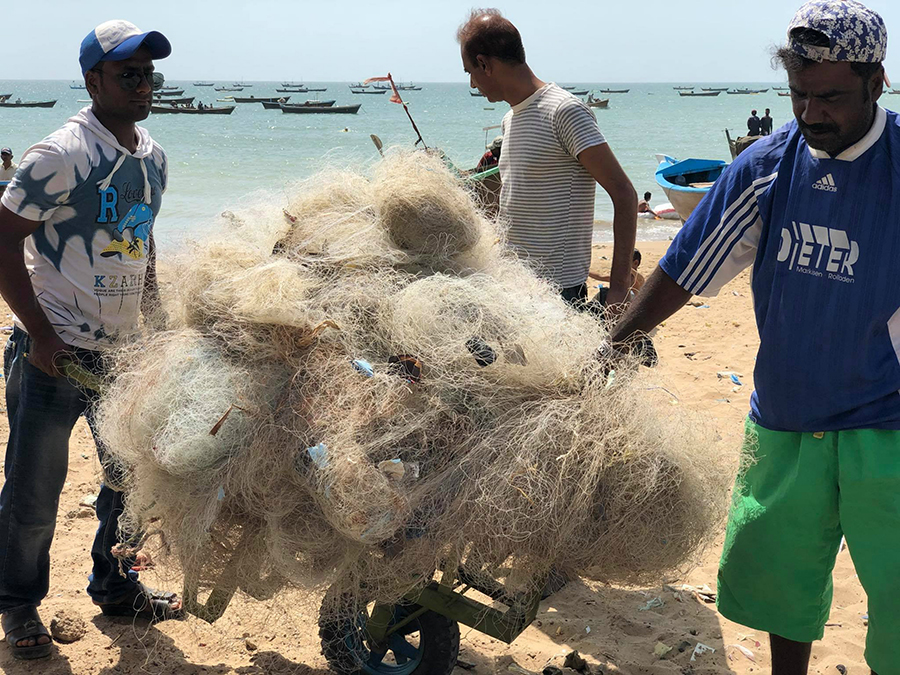
Locally managed marine areas
Both Ahmed and Mehmood know their battle against marine debris is a race against scale and time. They are also aware prohibitions and bans are neither recognised nor respected, and exist on paper alone. The only way they see they can win the battle against pollution is to prevent it from getting into the sea by involving local communities.
They decided to seek the help of fishermen in Abdur Rehman Goth, one among a string of fishermen hamlets between Sandspit and the French Beach near Karachi, to turn their village into a marine conservancy, or a locally managed marine area (LMMA).
The LMMA comes with a business plan for the community of 6,000 people. “We know the marine resources they harvested have dwindled over the years and the fishermen have become further entrenched in poverty. We are showing them an alternate and sustainable livelihood option as well as making them aware that some of their actions – overfishing using small mesh nets that are abandoned in the sea – are negatively impacting the ocean’s biodiversity, and in turn, harming their occupation,” Ahmed explains. Providing them an alternative will give the oceans some rest, too.
The two divers, with help of the fisherfolk, have set up a two-room eco-lodge in the village which is rented out to tourists. “We have not advertised but so far over a 100 people have used the facility. The only rule is they can neither bring their own food [the villagers will cook for them on order] nor single-use plastic inside the village,” says Ahmed.
In addition, they have introduced water sports – kayaking, banana boats and snorkelling – but no motorised sports like jet-skiing. They are training the locals to make the retrieved plastic ghost nets into crafts like bracelets and beach bags which will be put up for sale soon.
But most importantly, they are training a group of young men at a diving training centre established in the village.
Twenty-year old Naushad Ali is one of the first four lads who is getting trained by Ahmed’s team. For as long as he can remember, the sea has been a playground for Ali and his friends. As a seven-year old, he would make boats out of empty oil canisters or even wood and take them to the shallow waters.
“We would even ride the waves on our homemade wooden surfboard,” he says. As he grew older he enjoyed going underwater up to five feet, and hunt fish with a gun. Even the sight of dead turtles trapped in nets failed to ruin his dive, not until earlier this year when he saw the animals slowly dying while entangled in the net. “It really sunk in!” he says.
Ahmed is confident that their project will have a domino effect and soon other villages on either side of Abdur Rehman Goth will follow suit. “The new generation from among them need to be empowered to take care of the resources in the sea,” he says.
The two conservators will ideally like the government to declare the entire 1,046 km of Pakistan’s coast a marine protected area (MPA) like the uninhabited Astola island, located 39 km east of Pasni, in Balochistan province.
But not all MPAs need to be managed by the government, points out Mehmood. These can be managed through a private-public partnership or even completely privately, as has been done in various places around the world in the form of LMMAs, started in a more formal manner in 2000 with the formation of an LMMA network in Southeast Asia and the Pacific. “It is a win-win for everyone – eco-tourism provides an alternative livelihood and marine life thrives in turn,” he points out.
This article was first published in MIT Technology Review and is republished here with permission.
